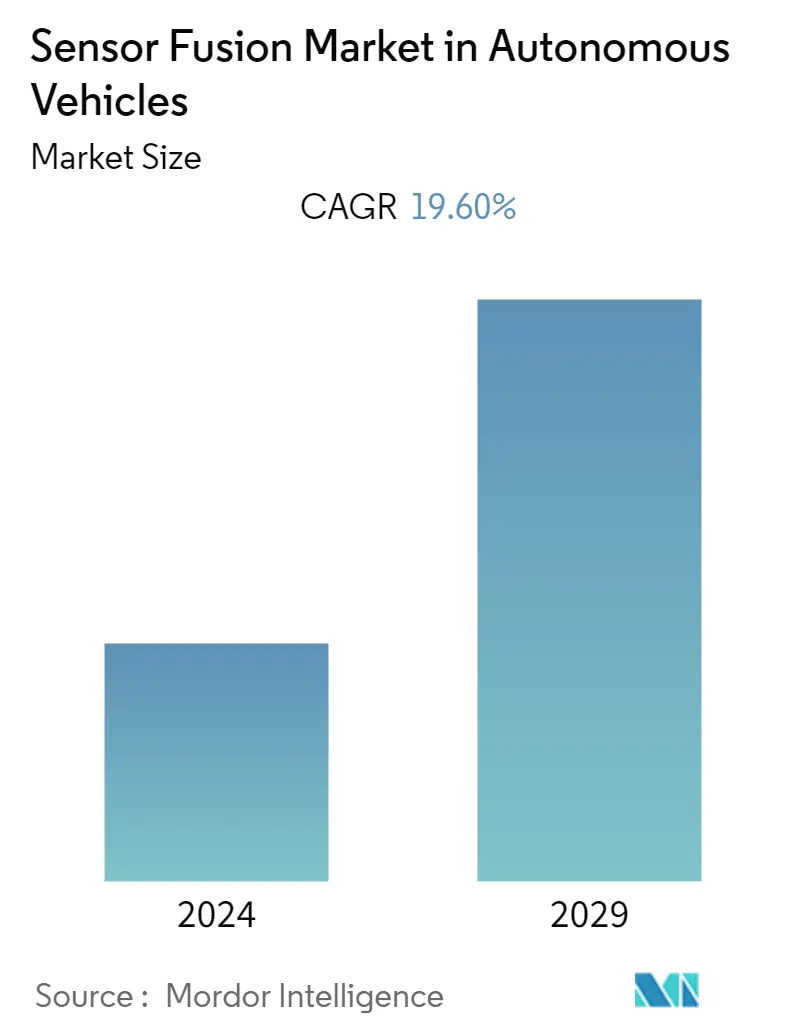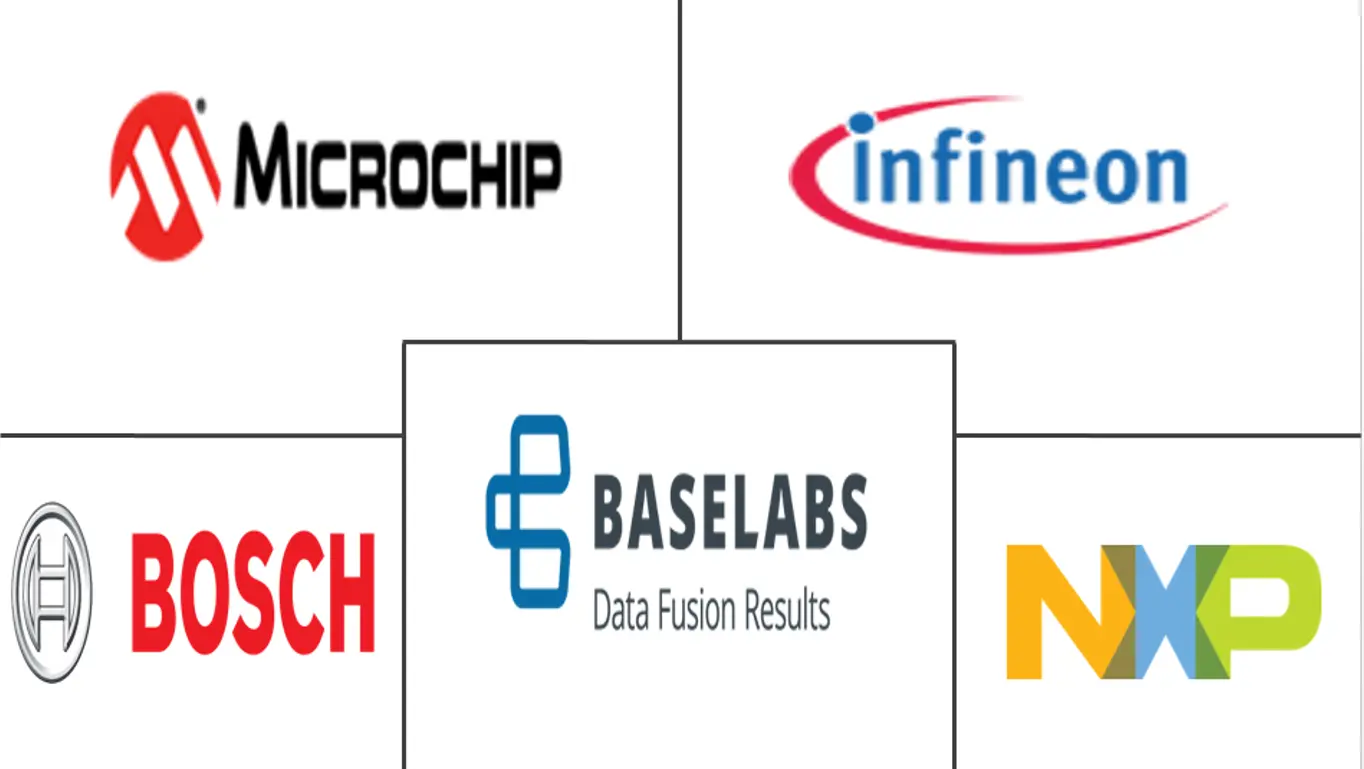Market Size of Sensor Fusion Industry in Autonomous Vehicles

| Study Period | 2019 - 2029 |
| Base Year For Estimation | 2023 |
| CAGR | 19.60 % |
| Fastest Growing Market | Asia Pacific |
| Largest Market | North America |
| Market Concentration | Medium |
Major Players
*Disclaimer: Major Players sorted in no particular order |
Need a report that reflects how COVID-19 has impacted this market and its growth?
Autonomous Vehicles Sensor Fusion Market Analysis
The sensor fusion market in autonomous vehicles is expected to grow by registering a CAGR of 19.6% during the forecast period. The growing trend of including advanced functionalities in autonomous vehicles, such as advanced driver assistance systems (ADAS), new radar systems, cameras, lidar, and GNSS sensors enhanced the requirements of flexible systems to quickly and safely detect the variables and respond, which is also among the significant factors driving the growth of sensor fusion in the autonomous vehicle sector.
- Resolving contradictions between sensors, synchronizing sensors, predicting the future positions of objects, and achieving automated driving safety requirements are some of the primary objectives of sensor fusion in an autonomous vehicle application. According to the World Economic Forum, more than 12 million fully autonomous cars are expected to be sold annually by 2035. Autonomous vehicles will account for 25% of the global automotive market. According to Intel, a single autonomous vehicle can generate an average of 4 terabytes of data per day. Sens fusion solutions can play a significant role in utilizing this massive data in real time.
- The growing development in ADAS and increasing utilization of the principle of GPS-IMU (Inertial Measurement Unit) fusion helps solve accumulated errors of dead reckoning in intervals with absolute position readings. Tesla's Autopilot automated driving feature is an example of an ADAS that can perform functions such as keeping the vehicle center in a highway lane by determining its precise position from data collected from a forward-facing camera and sensors.
- Collaboration between automotive and software companies is a common trend in the market. For instance, in April 2021, RoboSense, a lidar sensor provider, formed a partnership with Banma Network Technology, an intelligent automobile operating system and solution provider, and AutoX, China's leading robotaxi operator, to build a high-level autonomous driving platform for intelligent vehicles. The partnership was established primarily to promote the integration of intelligent cockpits with autonomous driving systems through the fusion of AI Capabilities, hardware, and software.
- Stringent government regulations globally also fuel the demand for the products in the market studied. For instance, Euro NCAP (European New Car Assessment Program) mandates the deployment of at least one driver assistance system. Countries like Japan and the United States also adopt similar criteria in their national NCAP rules.
- The growing safety issue of autonomous technology can not only limit the adoption of autonomous vehicles but could claim the authenticity of sensor fusion solutions. Standardization is one of the factors hindering the evolution of sensor fusion systems. Without global standards, the level of complexity of devices and ICs is expected to increase exponentially.
- The COVID-19 outbreak increasingly affected the automotive sector globally. Due to reduced outdoor activities, the demand for automobiles declined significantly, primarily during the initial phase of the pandemic. Furthermore, the reduced supply of automotive parts and shutdown of production facilities fell the working capital of automobile manufacturers, resulting in a delay or reduction in investments in new technologies. However, with the automotive sector recovering from the pandemic, new opportunities are on the horizon for sensor fusion solution providers.
